THE DOWNHILL HORSE
The downhill horse conformation, where the hindquarters are higher than the withers presents a challenge. (see FIGURE A)
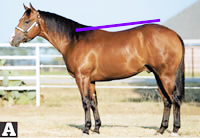
Using a bare tree FIGURE 1 illustrates the problem and FIGURE 2 illustrates the result.

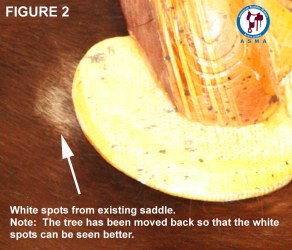
The vector forces indicated by the white arrow are pulling the saddle forward in to the shoulder as seen in FIGURE 3. The blue arrow shows the center line for a balanced saddle. So when the rider is aboard the center of gravity is out of balance causing the rider's torso to fall forward and the legs to push back adding additional force vectors blue arrows in FIGURE 3 to the front of the saddle. To correct being out of balance the rider will want to move the stirrups forward and apply even more force vectors to the front of the saddle green arrow in FIGURE 4 and add more force vectors on the back of the saddle red arrows in FIGURE 4. These additional forces in the back of the saddle could lead to problems over the kidneys.
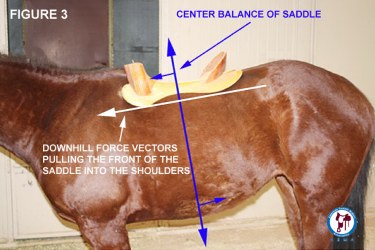
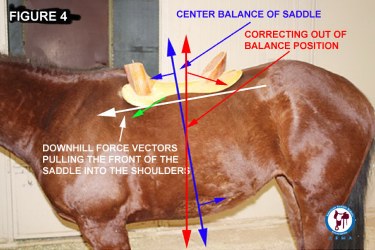
The possible solutions could be a special custom tree that levels the saddle (see FIGURE 5), a seat built that levels the rider, a special built-up pad to level the saddle or using a crupper to stop the saddle from moving forward. The level of positive fit will very as to the individual horse and method used, but will be lower than normal.
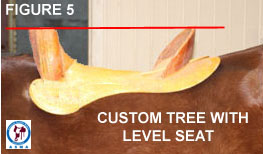
Editorial note: The mare in the above example is being used as a breeding mare. This situation in ASMA's opinion illustrates part of the problem with saddle fit. A horse with a conformation abnormality is being used as breeding stock and will be producing a bloodline with this conformation abnormality. This means that saddle fit for the entire bloodline will be problematic. The more of these situations there are, the failure rate for a positive saddle fit will increase. It is understood that some riders may feel that what may be considered an abnormality in conformation to others is positive attribute to them. ASMA has no problem with this position as long as the rider understands the consequences as illustrated above.
|
e-mail mailto:info@saddlemakers.org
Copyright 2005 - 2016 American Saddle Makers Association, Inc.
